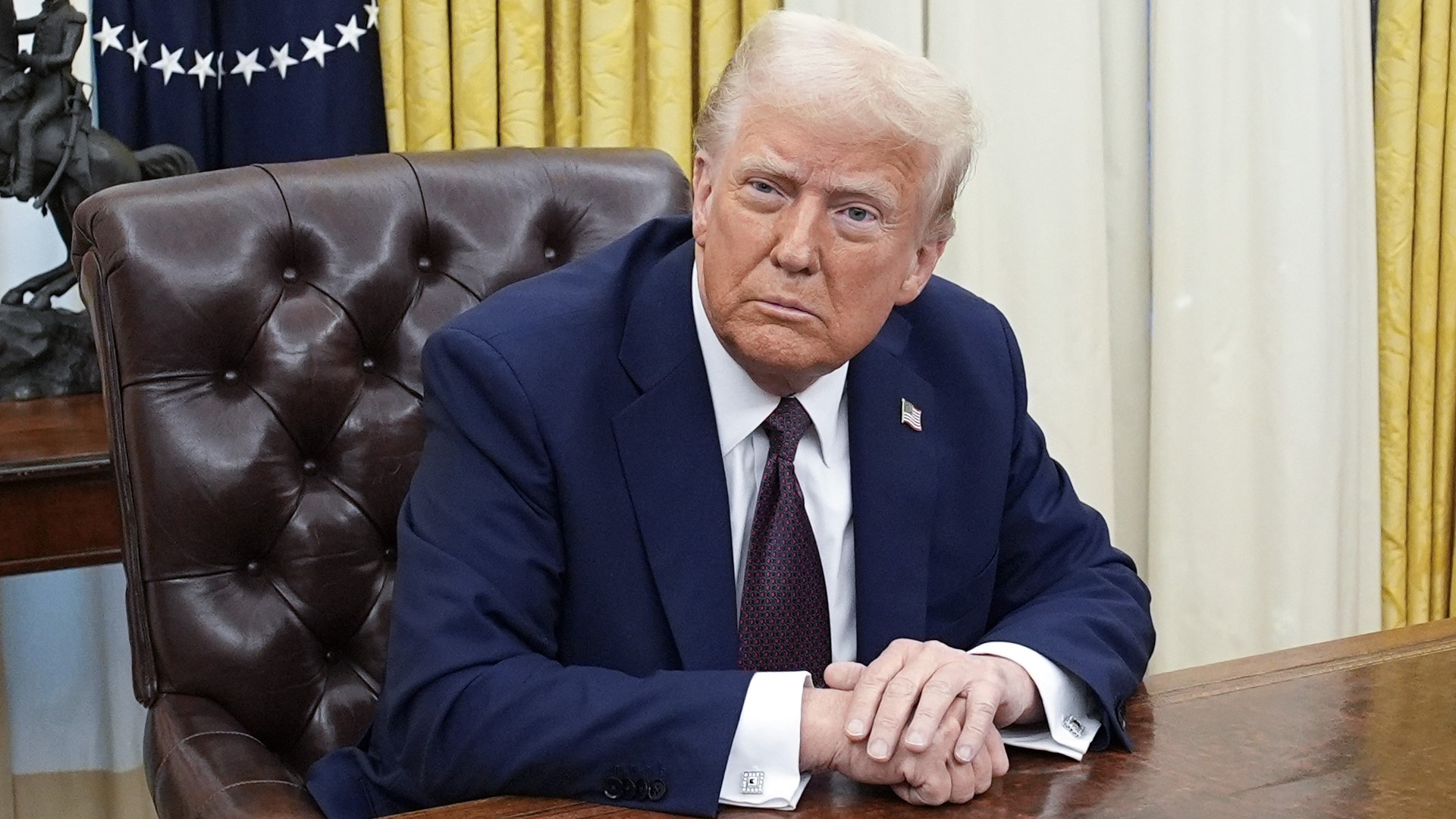
Many Americans, who in large part voted for Donald Trump due to his promises to lower food costs, are still experiencing sticker shock every time they grocery shop — especially for eggs. However, whether or not the president can help consumers save money remains to be seen, especially when you factor in the tariffs his administration has imposed.
Trending Now: I Asked ChatGPT What the Point of Trump’s Tariffs Are: Here’s What It Said
For You: 3 Reasons Retired Boomers Shouldn't Give Their Kids a Living Inheritance (And 2 Reasons They Should)
Even though President Trump previously acknowledged a rise in inflation (while deflecting blame) since he returned to office at the beginning of the year for his second term, it hasn’t slowed his economic plan of attack. Now, halfway through the year, it’s a good time to ask everyone, “Do you think your grocery bills will go down?”
GOBankingRates got some expert takes on this issue. Read on to see if they think Trump’s plan will ever be effective, and check out tips to save money on groceries here.
Trump’s Plan To Reduce Grocery Prices
It’s not as if Trump didn’t acknowledge that lowering grocery prices would be difficult. However, he believes it’s achievable by resolving supply chain issues and boosting domestic energy production. It would seem that many economists would argue this point, especially when it comes to tariffs on imported foods.
Trump noted that farmers use a significant amount of energy to plant, grow and harvest their crops. Then, it takes more fuel to ship the products to stores. In theory, if the country produces more fuel, the price at the pump will drop. The savings the farmers and shippers realize could then trickle down to consumers.
Good To Know: 5 Ways Trump’s ‘Big, Beautiful Bill’ Could Impact Your Wallet
The Impact of Tariffs on Your Grocery Bill
According to the World Bank and USDA, many items you eat or consume every day could be at risk for a bit of a price hike. Common imports will be most affected and that will be reflected at checkout.
GOBankingRates previously reported on looming tariff implications on your grocery cart. Here are some common items on our grocery list that could go up in price the most based on tariff rates of some of the main places they are imported from:
- Coffee: Brazil (tariff rate: 10%) and Colombia (tariff rate: 10%)
- Seafood: Chile (tariff rate: 10%), India (tariff rate: 26%), Indonesia (tariff rate: 32%) and Vietnam (tariff rate: 46%)
- Fruit: Guatemala (tariff rate: 10%), Costa Rica (tariff rate: 10%) and Peru (tariff rate: 10%)
- Wine: European Union (tariff rate: 15%), specifically France, Italy and Spain; New Zealand (tariff rate: 10%) and Australia (tariff rate: 10%)
- Beer: Mexico (tariff rate 25%), the Netherlands and Ireland (both with the EU’s 15% tariff rate) and Canada (tariff rate: 25%)
- Cheese: European Union (tariff rate: 15%) specifically Italy, France, Spain and the Netherlands
Expert Opinions on Trump’s Plan
Food costs are one of the biggest variables when addressing inflation and economic volatility for consumers. According to the University of Michigan’s consumer sentiment survey, a majority of American consumers say that inflation will rise, and expectations of inflation over the next year have soared. Two certified financial planners (CFPs) offered insight into the various aspects of Trump’s plan. Here’s what they shared.
Energy Production
According to Lamar Watson, founder of Dream Financial Planning, increasing energy production isn’t likely to have the effect Trump wants. He pointed out, “U.S. energy production is at all-time highs and it hasn’t kept energy prices down. Major oil companies don’t want [the price] to go too low because it will lower the value of one of their biggest assets, proven reserves of oil and natural gas. [Their] primary goal is to maximize shareholder value, not lower prices for consumers.”
Plus, even if increased production did lower the price of fuel, shoppers can’t expect to see much change in the stores. “Energy cost probably accounts for less than 10% of the price of groceries. The largest cost for most companies is labor,” he added.
Watson also noted that, in general, “Lowering energy prices will not be easy. Oil is a global commodity, and the president has a limited ability to influence the price of oil and other commodities.”
Supply Chain Management
Trump also has little or no ability to impact the supply chain, according to Watson.
He explained, “Private companies control the supply chain, and none of the middlemen are incentivized to lower prices, which will also lower their profitability. [Plus,] any changes to the supply chain would take a long time to implement and even longer [to influence costs at] the grocery store.”
Other Considerations
Watson also cautioned that “many of Trump’s stated policies, such as tariffs and mass deportations, which could lead to higher labor costs for farmers, will most likely be inflationary.”
Since much of the food the country imports comes from Mexico and Canada, tariffs could hurt consumers because the companies paying them will pass along that cost to shoppers, he explained.
Overall Outlook
Watson isn’t convinced that Trump’s plan will ever result in lower grocery bills for Americans, even if energy costs drop and the supply chain issues are resolved. The grocery business doesn’t tend to have high profit margins, so stores would likely use any savings to pad their bottom lines. At the halfway point of 2025, this would appear to be an astute analysis.
However, regardless of White House policies, lowering grocery prices is unlikely to be a realistic outcome. In other words, consumers shouldn’t bank on lower prices, but can hope they will at least stop going up.
Final Take To GO: What Consumers Can Do
The bottom line is that your food bill could remain high for the foreseeable future. Here’s what you can do while you wait to see if Trump’s plan has any positive effect:
- Shop sales. Buy-one, get-one-free deals can help you stock your fridge, freezer and pantry affordably.
- Buy store-brand goods. They’re usually just as tasty and often cost much less than their name-brand counterparts.
- Visit discount grocers, like Aldi, or shop in bulk at places like Costco, BJ’s or Sam’s Club. You may be able to slash your grocery budget significantly over a longer period.
- Eat at home. Cooking fresh meals for your family is likely much cheaper than dining out.
Consumers should also consider using a rewards credit card to buy groceries. If you pay your card off in full every month, you can use the cash back earned to help with the rising costs of groceries. Every little bit helps.
More From GOBankingRates
- 6 Costco Products That Have the Most Customer Complaints
- 5 Ways Trump Signing the GENIUS Act Could Impact Retirees
- 10 Cars That Outlast the Average Vehicle
- 5 Cities You Need To Consider If You're Retiring in 2025
This article originally appeared on GOBankingRates.com: Do Experts Think Trump’s Plan To Bring Grocery Prices Down Will Work?







